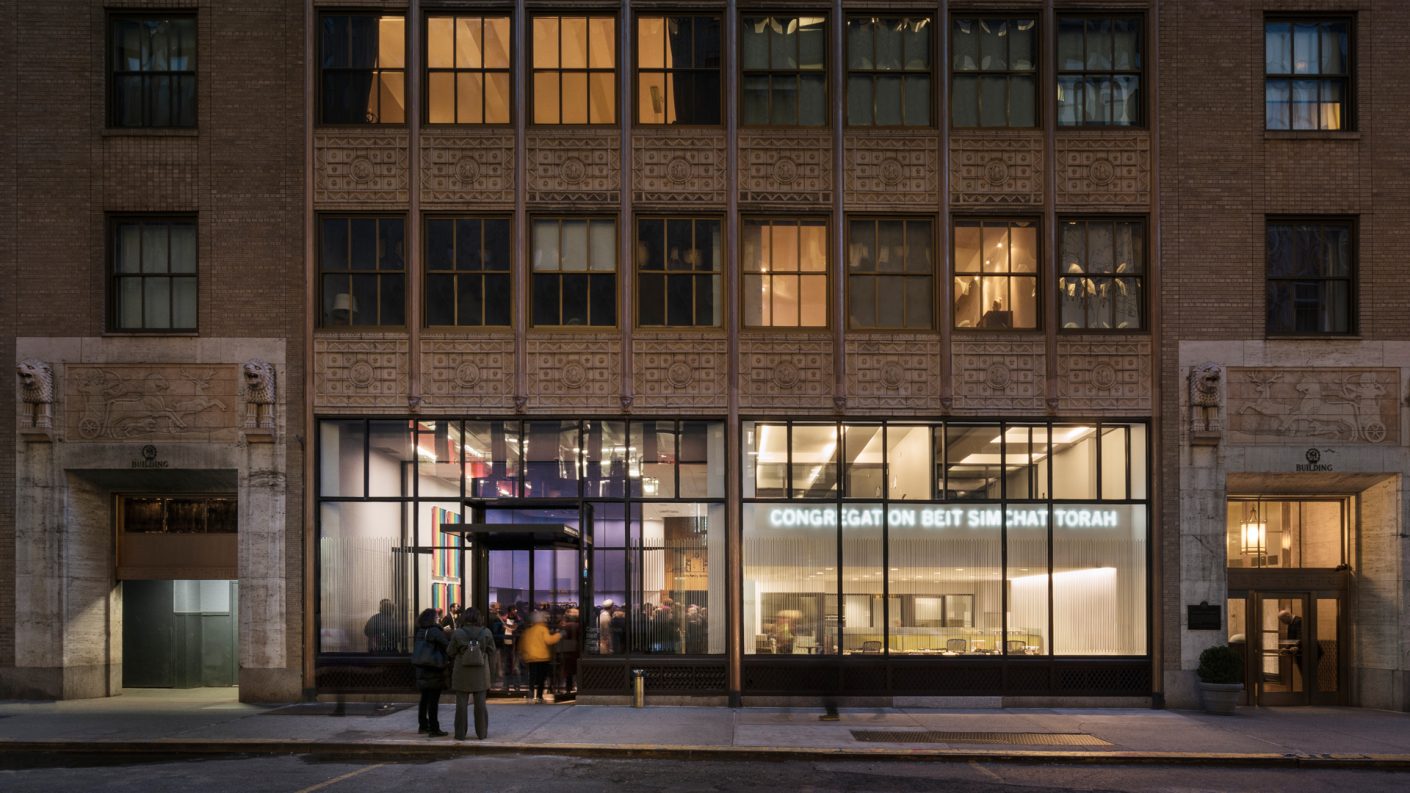Faith & Form, Congregation Beit Simchat Torah, 2018
“Planting a Synagogue in a Neighborhood”
Volume 51, Issue 3
Stephen Cassell

The history and mission of Congregation Beit Simchat Torah in New York City made it imperative that the architecture of its new home reflect both the institution’s role at the forefront of gay rights advocacy and the congregation itself, a proud, radically traditional and inclusive group that was an important part of its wider New York community. At the time I started working on the design, CBST’s current home, which dated from shortly after its founding in 1973, was difficult to find, only accessible through a courtyard at the end of a ramp. That disjoined configuration made the synagogue feel hidden. The congregants I interviewed consistently spoke of the need for their new synagogue to have a strong, visible presence within the neighborhood – to be out, proud, and open to all. Yet they also spoke of the deep need for a sanctuary within the city, a space where individuals could worship safely, both alone and as a community, in a world that is not fully accepting.
The search for a building to house the new synagogue yielded a landmarked, Cass Gilbert-designed building with 50 feet of storefront. The symbolism of this street-front location was powerful, asserting CBST’s presence on the street and transparently reflecting its motto of being “open to all.” With a new façade – a composition of lit signage spelling out Congregation Beit Simchat Torah with vertical gold pinstripes and lavender glass – the architecture embodied CBST’s radical traditionalism, revealing a modern, active institution within a historic, landmarked setting. Away from public eyes, the sanctuary – whose only connection to the outside is through a skylight that washed daylight along a fluted concrete wall – is a soulful space for private worship.
The new synagogue embraces its neighboring community, making its presence known. The view from the street into CBST;s offices lets the world see that those within are working for social justice every day. Yet this embrace is balanced by the sanctuary, which is purposely removed from the city. The introspective and extroverted together define and strengthen the synagogue as a whole.